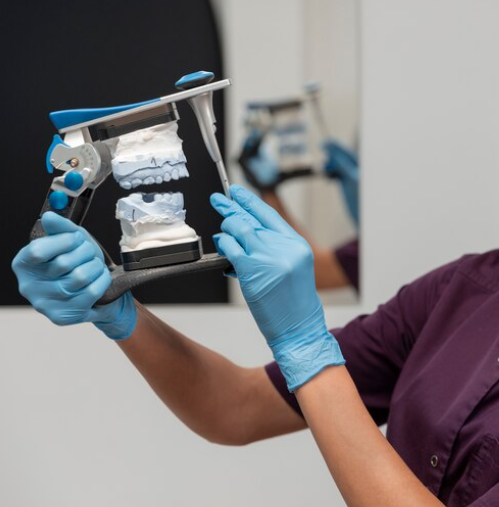Introduction
Pregnancy is a journey full of happy, exciting, and wondrous moments. Getting to see your baby for the first time during an ultrasound scan is probably the most exciting of them.
Prenatal scans have traditionally used 2D sonography, which provided black-and-white pictures that gave expectant parents an early look at their developing child. But because of developments in medical imaging, 3D and 4D ultrasounds have completely changed the way we see pregnancy, bringing the first pictures of your child to life with amazing clarity and detail.
Knowing About Ultrasonic Technology in 3D and 4D
It’s critical to comprehend the meanings behind 3D and 4D ultrasounds in order to fully enjoy their wonder. A static three-dimensional image of the foetus is produced by combining several two-dimensional images collected at different angles in a 3D (three-dimensional) ultrasound.
This technology gives parents views of the face, limbs, and organs that were not available with standard 2D sonography, allowing them to see their baby’s features more realistically.
In the meantime, time is added as a dynamic aspect by the 4D ultrasound. It records motion-capturing 3D photos so you can witness your kid doing things like kicking, yawning, and smiling in real time.
With the use of this technology, expectant parents can witness an extraordinarily personal glimpse into their unborn child’s life, adding to the specialness of the event.
The Evolution of Sonography from 2D to 3D and 4D
The advancement of medical imaging has been enormous, with 2D ultrasounds giving way to 3D and 4D ultrasounds. The emotional and bonding experience that expectant parents have with their unborn child has been improved by 3D and 4D technology, even though 2D sonography is still an essential tool for evaluating the health and development of early life. It truly is a miraculous journey from a flat, frequently indistinct image to a rich, lifelike portrayal of the foetus.
2D Ultrasound: Its Basis
2D (two-dimensional) ultrasonography technology marked the start of the adventure. This classic sonography method, which is still in use today, produces black-and-white, flat images of the foetus.
It produces cross-sectional pictures of the uterus, placenta, and foetus by using sound waves that reflect off internal architectural features. Assessing the mother’s reproductive organs and the baby’s growth, location, and fundamental anatomy is made much easier with the help of these photographs.
Nevertheless, there are restrictions on the depth and level of detail that may be obtained with 2D ultrasounds.
3D Ultrasound: An Innovative View
A big advancement was made when three-dimensional ultrasonography was introduced. This method creates a three-dimensional image of the foetus by processing several two-dimensional photographs from various angles using sophisticated software.
Parents and medical professionals can see the baby’s face features and anatomy more clearly in these photos, which also give a more realistic representation of the baby’s anatomy.
Certain foetal defects, such cleft lip or spinal abnormalities, that might not be as visible in 2D pictures can now be diagnosed with 3D sonography.
4D Sonography: Including Motion
With the development of 4D (four-dimensional) ultrasonography, which gives 3D images a temporal component and effectively creates a live film of the foetus in the womb, the evolution continues.
This makes it possible for caregivers and medical professionals to see in real time actions and behaviours including thumb sucking, yawning, and smiling. In addition to offering a new level of prenatal bonding, this dynamic feature of 4D sonography helps with the evaluation of foetal behaviour and growth.
Safety and Clinical Consequences
It’s crucial to remember that 2D ultrasounds are still the norm in prenatal care because of their demonstrated efficacy in medical diagnosis, even if 3D and 4D ultrasounds have offered fresh perspectives on foetal growth.
Generally speaking, 3D and 4D ultrasounds are safe when utilised properly by qualified specialists, primarily for medical objectives rather than just souvenirs, according to obstetricians, gynaecologists, and other health authorities.
Clinical Uses and Advantages
Not only do 3D and 4D ultrasounds produce stunning images of the unborn child, but they also have important clinical uses. These sophisticated sonography methods can give medical practitioners additional insight into the anatomy of the foetus, which can aid in the more accurate diagnosis of certain problems. 3D/4D imaging makes it easier to diagnose conditions including heart anomalies, spinal cord problems, and cleft lip.
Safety and Things to Think About
The broad opinion among medical professionals about the safety of 3D and 4D ultrasounds is that they are safe when utilised properly. It’s crucial to remember that these must be carried out by licensed medical personnel.
Heat and Bubble Formation: Ultrasounds function by introducing sound waves into the body, which may result in little bubbles forming in tissues and mild heating.
Qualified Healthcare Professionals:
Qualified healthcare professionals should perform all ultrasounds, including 3D and 4D. They receive training on both safe equipment use and precise picture interpretation, guaranteeing the procedure’s safety as well as the dependability of the outcomes.
Steer clear of Keepsake Ultrasounds:
The FDA is adamantly against using 3D and 4D ultrasounds to produce mementos or images. This is because personnel may not have had the necessary training to safely operate ultrasound machines in non-medical settings, and non-medical settings may not adhere to the same strict safety regulations as medical facilities.
Heat and Bubble Formation:
Ultrasounds work by sending sound waves into the body, which could cause some minor heating and the formation of tiny bubbles in tissues.
Qualified Healthcare experts:
All ultrasounds, including 3D and 4D, should be performed by qualified healthcare experts. They are trained in accurate picture interpretation as well as safe equipment use, ensuring both the procedure’s safety and the reliability of its results.
Avoid Keepsake Ultrasounds:
The FDA is firmly opposed to producing souvenirs or images utilising 3D and 4D ultrasounds. This is due to the possibility that staff members in non-medical settings lack the training required to operate ultrasound machines safely and that these types of settings do not follow the same stringent safety rules as medical facilities.
In summary
Prenatal imaging has undergone a revolution with the introduction of 3D and 4D ultrasound technology, which provides expectant parents with a breathtaking and personal glimpse of their developing child.
The happiness and amazement these scans provide to parents is incalculable, even though the main goal should always be to guarantee the health and wellbeing of the foetus.
The ability to communicate with and comprehend life inside the womb will only grow as medical technology advances, increasing the link between a parent and their unborn child.






